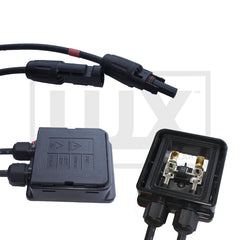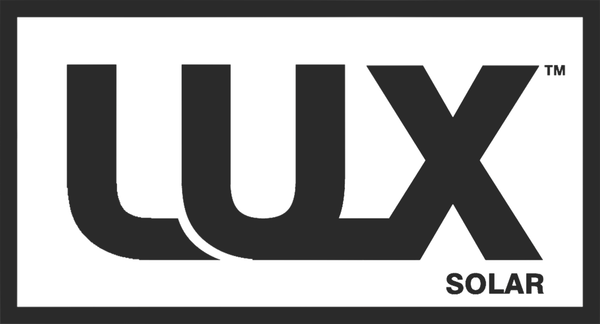
Solar Systems 101 - The Very Basics
LUX Knowledge is Power Series: Solar Systems 101 - The very basics
Welcome to the LUX "Knowledge is Power" series, equipping you with you with the knowledge you need to confidently set up your own solar system.
This week, we outline the 5 basic components of any "complete" small solar system:
1. Solar Panel
Solar panels convert energy from the sun to electricity. Monocrysalline panels are the most efficient type of panel available on the market (i.e. you get the most power / Watts per surface area of panel).
2. Battery
Batteries store energy collected by your Solar Panel so you can use it later.
Your battery size and type should be compatible with your solar panel/s, controller, and power requirements.

3. Charge Controller
Put simply - charge controllers "control" how the panel charges the battery - making sure the battery is not under charged or over charged.
Your charge controller should be compatible with your battery/ies & solar panel/s, and suited to the environment where you will be mounting it (e.g. indoors or outdoors).

4. Cables, Connectors, Circuit Breakers & Fuses
Electrical cables connect between the solar panel, controller, & battery. Circuit breakers & fuses help protect the cables and prevent fires!
Cables need to be thick enough to carry the power output of the solar panels, and cables/connectors should be sufficiently water-proof for your application.


5. Mounting
Mounts secure your solar panel to your roof of other surface, and cable glands feed wires from the solar panels through your roof to your charge controller/battery.

What about inverters?
Inverters convert DC power (which runs boats / caravans) to AC power (which runs your house).
Solar panels and batteries output DC Voltage, which is why boat & caravan appliances are designed to run on DC power. That's why you do NOT need an inverter to run boat/caravan appliances.
You only need an inverter (or some other DC to AC converter) if you want to run "household" appliances, and/or connect to the national power grid (which runs on AC).
Hope you enjoyed this basic overview - next up we will dive deeper into each component in turn.
